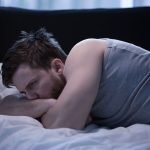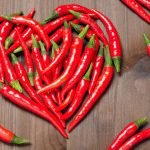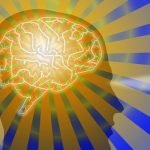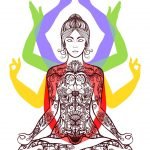Engaging Patients’ Consciousness, and Supporting Them in More Direct Participation with Their Healing Process
Paul Epstein, ND
“While we all acknowledge the value of a holistic approach as an integral part of naturopathic medicine, not enough recognition is given in our curriculums as to how we can best integrate holism into our role as naturopathic physicians. In order to go beyond the password “holistic,” this course has been designed to explore the deeper issues of how to address these aspects of mind-body-spirit in yourself and with your clients. Being “holistic” can go beyond finding the right supplement, botanical extract, homeopathic remedy or point. It is being able to contact the deeper essence of a person, whether you call it the spirit, soul or vital force. In contacting this deeper essence, the holistic physician is to tap the person’s true source of healing, and initiate a process of both healing and transformation.”
The above paragraph was taken from a 1984 course entitled Healing, Consciousness and Transformation that I co-designed and co-taught with Nimrod Sheinman, ND (currently director of the Israel Center for Mind-Body Medicine, which I co-founded) and others. While the course occurred 23 years ago, the questions that it raised are still relevant: “What’s the connection between vis medicatrix naturae and the deeper essence?”; “What is healing and how does it happen?”; “How can we deeply support our patients’ healing from within?”; and “Where’s the healing?.”
These questions have been part of my life’s quest for the last 20-some years, both personally and professionally. On the surface, our naturopathic tradition emphasizes the understanding that healing comes from within. Yet, on a deeper level, I have been dissatisfied with our curriculums, conferences and journals, where too little space has been devoted to the patient’s inner and deeper world. Intuitively, I have been drawn to search for ways to engage people’s consciousness, and to support them in a more full and direct involvement and participation in their healing process.
Living Questions … Where’s the Healing?
Prior to my naturopathic training, I witnessed first-hand the healing power of nature as a yoga and meditation teacher. Through yoga, I saw people changing diets and lifestyles, dealing with their stresses, learning relaxation, and studying philosophy and new ways of viewing reality. As their consciousness and life changed, their health inevitably improved, as well. Observing this became a prime motivation to become an ND. But I wanted more of a role as a healing coach, one that practices this statement from Joseph Califano in the 1976 Surgeon General’s Report, Healthy People: “You, the individual, can do more for your own health and well being than any doctor, any hospital, any drug, any exotic medical device” (Surgeon General’s Report, 1979).
When I helped develop a lifestyle change program at a naturopathic clinic in Portland, integrating diet, exercise and stress management, I better understood Califano’s quote, and sensed that the less I would act as a prescriber, the more my patients could and would act as self healers.
Healing: Treating the Whole Person
The following case study taught me an important lesson: As a naturopathic resident, I worked with a patient who had high blood pressure and diabetes, and for whom a lifestyle change, diet, supplements, remedies and stress counseling would be appropriate. After six months of visits, treatments and weight loss, his clinical symptoms and tests normalized. We had a very successful outcome, or so I thought. The patient returned a year later, however, with all of his symptoms and clinical diagnoses we had treated and “cured.” While everything was different about his lifestyle, something very important to his transformation and healing process hadn’t changed. What had been missed?
It reminded me of my mother’s chicken soup: All of the ingredients can be there, but without the right touch of salt at just the right time, it can be flat. I would later come to understand and realize that we didn’t engage this patient’s consciousness. We did not treat the whole person … we missed an underlying cause. To paraphrase Einstein: You can’t solve a problem with the same consciousness that created it.
The question we should have asked that patient, and that I always ask my patients now, is “How did you come to be this way?” I want to know what happened, why they came to my office, what they think contributed to their illness, disease or pain.
Mind-body medicine became my main therapeutic approach to living and answering that question with clients. Clinical guided imagery, mindful inquiry, Buddhist psychology and perspectives, and various psychotherapies became my tools for finding the meaning and message of illness, listening to symptoms and inner wisdom, and engaging the person’s conscious and unconscious awareness into the healing process.
Biography Becomes Biology
Through the years, I began asking a second question, one that came from a vision quest experience and American Indian saying: Am I willing to listen with the ears of my heart to the other voices of myself speaking?
This question encourages people to look inside, listen and observe. As Marc Barasch, author of The Healing Path, said: “Our disease may tell us a story, not just of our cells, but of ourselves. By taking the risk of listening, we may be led to the emotions that lie at the core of our authentic being” (Barasch, 1995). Dr. Leslie Goldschlager, colleague and friend, corroborated this when he said, “Illness and symptoms have a message. Understanding and discovering their meaning can be the key that unlocks the door to healing and recovery.”
Listening to symptoms for their meaning and message is the essence of learning how biography becomes biology. One patient’s case illustrates this well: Sara had been trying to lose weight for 20+ years. During those years, she kept losing weight, and gaining it again. Using guided imagery and exploring her body fat, she evoked the image of a down comforter. With it came the awareness of childhood abuse and the down comforter as an ally – protecting and defending her, covering a part of her that was still frightened and vulnerable. Once she consciously realized her obesity had been serving a purpose and wasn’t the real issue, her weight loss process became very different. We were able to address the painful feelings she had buried; and this time, the results of her weight loss were permanent.
While other naturopathic therapeutics can and do address and provide the missing ingredient in the healing soup, mind-body medicine seems to be particularly effective for people with chronic issues and stress-related, lifestyle and autoimmune processes and diseases, and those carrying burdens of trauma from their biography. This perspective on healing is also defined by Stephen Levine, a poet, author and teacher of guided meditation healing technique: “If there is a single definition of healing, it is to touch with mercy and awareness those pains from which we have withdrawn in judgment and dismay.”
Awareness is the Healer
To help further my quest for “Where is the healing?,” I explored various counseling and psychotherapy models, including interactive guided imagery, insight meditation, mind-body psychotherapy and internal family systems therapy.
In addition, my personal path had shifted to studies and practices of Buddhism, including meditation, mindfulness and compassion, which helped me learn how to further facilitate deep listening, cultivate unconditional presence and embrace the truth. The following case study provides an excellent example.
An anxious and neurotic young man presented with an array of symptoms, from allergies to asthma to a slew of phobias. However, he refused all treatment options I offered. He wouldn’t change his diet; take the homeopathic remedy I prescribed; or talk about any biographical, spiritual or mind-body issues. As I became more frustrated, I realized that my own dismay at the situation kept him from living the questions. I was about to recommend him to another doctor when Buddhist insights came to me: “Be,” don’t “do.” Stop trying so hard. Just be present and accept him unconditionally.
Integrating the teachings of Buddha led me to refocus on healing, not just curing. In curing, we are looking for answers, and our efforts are designed to make something happen. In healing, we live questions (instead of answers), trust the unknown, and allow and welcome the emergence of whatever will come. The issue is not healing vs. curing; we need both.
When I let go of my attachment and “need” to cure this patient, he let go of his resistances. He began to change his diet, talk about his past (he’d been physically and emotionally abused by his father) and take the homeopathic remedy. He began to break open his shell, engage in his healing journey and touch his wounds with mercy and awareness.
Homeopathy Without the Remedy
A mindful mind-body healing approach, involving listening to and being with our pain with unconditional presence and radical acceptance, is somewhat like homeopathic medicine and true to its philosophy of “like cures like.” In homeopathy, we subtly intensify a symptom or malady to activate and mobilize the organism’s natural healing responses. With mindful awareness, healing and mind-body medicine, when patients are unconditionally present with their dis-ease, they amplify their awareness of what they are stuck in – which usually arouses a deep-felt desire to move in a new direction. In 12-step recovery programs, this is “hitting bottom” and step one of radical acceptance. Awareness itself purifies and heals.
Stress and the Mind-Body Connection
A 1988 study from the American Academy of Family Physicians said that 75% to 90% of visits to the family physician are for stress-related complaints. Sam Keen and Anne Valley-Fox, authors of Your Mythic Journey, state that “80% of our dis-ease is psychosomatic in origin, the result of unresolved conflicts, unconscious anxieties and unfulfilled potential … the self at war with itself; thus, most physicians are practicing philosophy without a license.” (Keen and Valley-Fox, 1989). This understanding is at the core and heart of mind-body medicine and the importance of fully addressing and integrating therapeutically stress and the patient’s biography as key aspects of etiology, healing and curing. This also led me to my third question for patients to ask themselves: “How can I be with my pain, symptoms and illness in a way that is wise, compassionate and healing?”
The following case study illustrates use of this question. A 75-year-old woman presented to my office with severe back pain from osteoporosis and arthritis of two years’ duration. She was severely depressed after two years of treatments involving drugs, surgery, painkillers, anti-inflammatory medications and antidepressants, all to no avail. I asked her the three questions that have become a foundation for my practice. She replied that her husband of 55 years had died. He had Parkinson’s disease and Alzheimer’s disease, and had had a stroke. She had decided to “pull the plug.” Though that decision helped end his suffering, it was an excruciatingly difficult one for her to make. She also said she didn’t want to “fall apart,” as all her friends did when they lost their spouse. Unfortunately, the body remembers what the mind tries to forget.
I learned that she hadn’t really grieved, hadn’t been able to face the pain of her loss or even the sadness, guilt and shame that she carried. However, during the course of her therapy, she chose to listen, engage and face her truth and pain, practice forgiveness of herself (from God, her husband and herself) and participate fully in her healing. While she still had symptoms of arthritis and osteoporosis, she was able to function, and no longer required painkillers or antidepressants. She began writing poetry again and seeing friends. In her book of poetry, which she signed and gave to me, she wrote, “Thank you for saving my life. You were the only one who listened to me, the only one who helped me face the truth I was carrying and covering up and burying.”
As J. Krishnamurti, philosopher and author, says: “… It is the truth which liberates, not your efforts to be free.”
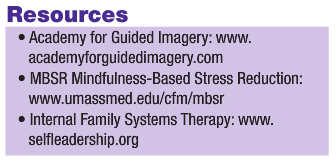 From living the question, “Where’s the healing?,” through my career as an ND, I have learned that: 1) who we are and how we “be” is often more important than what we know and do; 2) healing really does comes from within and requires the engaged conscious awareness of the person and connection with essential being; 3) there is a mind-body-spirit connection; and 4) in the heart of the pain is the healing, and in the heart of the healing is the pain.
From living the question, “Where’s the healing?,” through my career as an ND, I have learned that: 1) who we are and how we “be” is often more important than what we know and do; 2) healing really does comes from within and requires the engaged conscious awareness of the person and connection with essential being; 3) there is a mind-body-spirit connection; and 4) in the heart of the pain is the healing, and in the heart of the healing is the pain.
People have always asked me who I am, what I do and how I practice. The answer I give has changed over the years. Now, I say that I guide people to open up and listen inside; I support them to be with their pain and embrace their truth; I encourage them to live questions and see with new eyes; I help them engage their healing journey with their spiritual path; and I try to bring them home, to their true and authentic self. My sense is that every physician is seeking and exploring how to integrate mind-body healing perspectives and deeper questions within the practice of naturopathic medicine and in using all our therapeutic modalities. This article shares my quest, where it has taken me and how I practice living these questions and staying true to naturopathic principles and ideals.
Editorial: Mind-Body Medicine Needs More Emphasis in Naturopathic Education and Clinical Practice
75% to 90% of visits to the family physician are for stress-related complaints
– 1988 study, American Academy of Family Physicians
There’s no question that naturopathic therapeutics can provide solutions to patients’ varied ailments. However, to me, mind-body medicine seems to be particularly effective for people with stress-related disease, which is a major underlying cause for physician visits.
While our profession certainly recognizes the value and importance of the mind-body connection – as stated in naturopathic brochures and naturopathic schools’ curriculum – still more needs to be done for mind-body medicine to become an equal clinical modality with nutrition, botanical medicine, acupuncture, manipulation and homeopathy.
Following are a few observations that may illustrate the lack of integration and emphasis of mind-body medicine within the naturopathic profession.
In the September 2005 issue of NDNR, multiple autoimmune cases were presented. In the beginning of each case history, it was stated prominently that biographical and stress factors were important predisposing and contributing primary etiological factors. However, in each case, readers learned how the patient’s symptoms were treated and “managed,” with a focus on functional medicine perspectives – all of which are important, necessary key components to help treat the patient – yet there was no mention of if or how the underlying stressors, emotions, thoughts and beliefs were clinically addressed and integrated in the overall treatment plan.
What happened to treating the underlying cause, treating the person as well as the disease, and treating the whole as well as the part? Where and how were we activating the vis medicatrix naturae? Where is the healing in this approach?
Also consider the 2007 AANP membership form and application. One section asks applicants to choose their main area(s) of practice focus. In a list of 30 or so options from “A” to “Z,” mind-body medicine is not even listed, nor is any stress-related focus.
Our profession’s principles and philosophy state that we treat the cause and the whole person. When we live in a clinical world with statistics like “75% to 90% of diseases are stress related” and “80% of physician office visits are for stress-related complaints,” how can stress counseling, mind-body counseling, psycho-neuro-immunology, mind-body psychotherapy, integrating the mind-body connection and focusing on healing beyond cure not become a more important component of naturopathic education, clinical training and practice, equal to and integrated with our other modalities?
The Vision
To move forward, the ideal scenario would involve each school committing to having a complete mind-body medicine department, with a structured academic curriculum, as well as clinical training and supervision. Teaching should include the latest science, therapies, art, research, clinical application and therapeutic integration, all within the unique perspectives of our naturopathic practice.
Only then can mind-body medicine take its rightful place in our profession – as a unique modality of its own and as a catalyst for our other therapeutics. In such a way, mind-body medicine can enhance our effectiveness to both heal and cure, and can bring us “back home” to our deep core naturopathic principles and philosophy.
 Paul Epstein, ND is a 1984 graduate of NCNM, specializing in mind-body integrative medicine and mindful healing. He is featured in the May/June issue of Spirituality and Health Magazine, and is being sponsored for a national workshop tour called “The Healing Journey.” He is a co-founder of the Israel Center for Mind-Body Medicine; maintains a private practice in Westport, Ct.; travels extensively, leading workshops and retreats worldwide; and offers imagery and mindfulness healing seminars. Dr. Epstein offers professional mentoring services to support, train and coach health professionals wanting to integrate mind-body medicine in their therapeutic work.
Paul Epstein, ND is a 1984 graduate of NCNM, specializing in mind-body integrative medicine and mindful healing. He is featured in the May/June issue of Spirituality and Health Magazine, and is being sponsored for a national workshop tour called “The Healing Journey.” He is a co-founder of the Israel Center for Mind-Body Medicine; maintains a private practice in Westport, Ct.; travels extensively, leading workshops and retreats worldwide; and offers imagery and mindfulness healing seminars. Dr. Epstein offers professional mentoring services to support, train and coach health professionals wanting to integrate mind-body medicine in their therapeutic work.
References
U.S. Public Health Service Office of the Surgeon General: The Surgeon General’s Report on Health Promotion and Disease Prevention, Rockville, 1979, U.S. Public Health Service, pp. forward.
American Academy of Family Physicians: Survey 1988.
Barasch M: The Healing Path: A Soul Approach to Illness, New York, 1995, Penguin.
Keen S and Valley-Fox A: Your Mythic Journey: Finding Meaning in Your Life Through Writing and Storytelling, New York, 1989, Jeremy P. Tarcher/Penguin Group.


